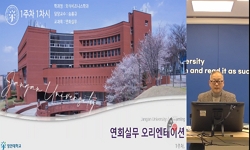Purpose: The purpose of this research was to increase the consumption of seafood, a high-quality protein sources, by suggesting popular seafood menus for Koreans. Institutional seafood menus provided to different groups of subjects were investigated a...
http://chineseinput.net/에서 pinyin(병음)방식으로 중국어를 변환할 수 있습니다.
변환된 중국어를 복사하여 사용하시면 됩니다.
- 中文 을 입력하시려면 zhongwen을 입력하시고 space를누르시면됩니다.
- 北京 을 입력하시려면 beijing을 입력하시고 space를 누르시면 됩니다.

우리나라 대중성 수산물 이용 활성화를 위한 급식 메뉴 제안: 단체급식 수산물 메뉴조사를 기반으로 = Suggested institutional food-service menus for stimulating the consumption of popular fish by Koreans based on an investigation of institutional seafood menus
한글로보기https://www.riss.kr/link?id=A109353203
- 저자
- 발행기관
- 학술지명
- 권호사항
-
발행연도
2024
-
작성언어
Korean
- 주제어
-
등재정보
KCI등재
-
자료형태
학술저널
-
수록면
346-357(12쪽)
- 제공처
-
0
상세조회 -
0
다운로드
부가정보
다국어 초록 (Multilingual Abstract)
Results: The results showed that the serving frequency of seafood menus was monthly 15.5 times in daycare center while 12.1 in elementary school. The highest was 33.0 times in senior welfare center, whereas the lowest was 11.6 in middle school. The side dish was the most popular type among seafood menus in all of the groups. The menus were classified into four types, including rice/porridge, soups, side dishes, and noodles. Sixty-three menus were developed for the four institutional groups using shrimp and six types of popular fish. Standard recipes were made based on nutrient analyses. The interviewees from focus-group interviews gave high scores to the menu components and cooking methods. The focus-group interview results indicated that the suggested seafood menus could be immediately used based on outstanding evaluation outcomes for group preferences and diverse ingredients. Conclusion: Institutional food-services could provide high-quality protein using the seafood menus developed by our research team. We expect menu diversity as well as fish consumption to increase using the menus developed by us.
Purpose: The purpose of this research was to increase the consumption of seafood, a high-quality protein sources, by suggesting popular seafood menus for Koreans. Institutional seafood menus provided to different groups of subjects were investigated and new menus were proposed. Methods: The investigation scope of institutional seafood menus included daycare centers, elementary schools, middle schools and senior welfare centers. The frequency of serving seafood menus to subjects at the above institutions was compared. We developed institutional seafood menus including shrimp and six types of popular fish tailored for the different subject groups. We also provided standard recipes for serving one person based on nutrient analyses. The focus-group interview method was used to interview institutional food-service menu experts to evaluate the applicability of the developed menus to real-world institutional food services.
Results: The results showed that the serving frequency of seafood menus was monthly 15.5 times in daycare center while 12.1 in elementary school. The highest was 33.0 times in senior welfare center, whereas the lowest was 11.6 in middle school. The side dish was the most popular type among seafood menus in all of the groups. The menus were classified into four types, including rice/porridge, soups, side dishes, and noodles. Sixty-three menus were developed for the four institutional groups using shrimp and six types of popular fish. Standard recipes were made based on nutrient analyses. The interviewees from focus-group interviews gave high scores to the menu components and cooking methods. The focus-group interview results indicated that the suggested seafood menus could be immediately used based on outstanding evaluation outcomes for group preferences and diverse ingredients. Conclusion: Institutional food-services could provide high-quality protein using the seafood menus developed by our research team. We expect menu diversity as well as fish consumption to increase using the menus developed by us.
동일학술지(권/호) 다른 논문
-
규칙적 운동 수행에 따른 MZ세대의 고단백 식품 인식 및 섭취 패턴 비교 연구
- 한국식품조리과학회
- 김지선
- 2024
- KCI등재
-
어린이용 요리 밀키트의 일반적 및 교육적 선택 속성에 대한
- 한국식품조리과학회
- 박단비
- 2024
- KCI등재
-
- 한국식품조리과학회
- 박지우
- 2024
- KCI등재
-
- 한국식품조리과학회
- 강혜연
- 2024
- KCI등재




 KISS
KISS


